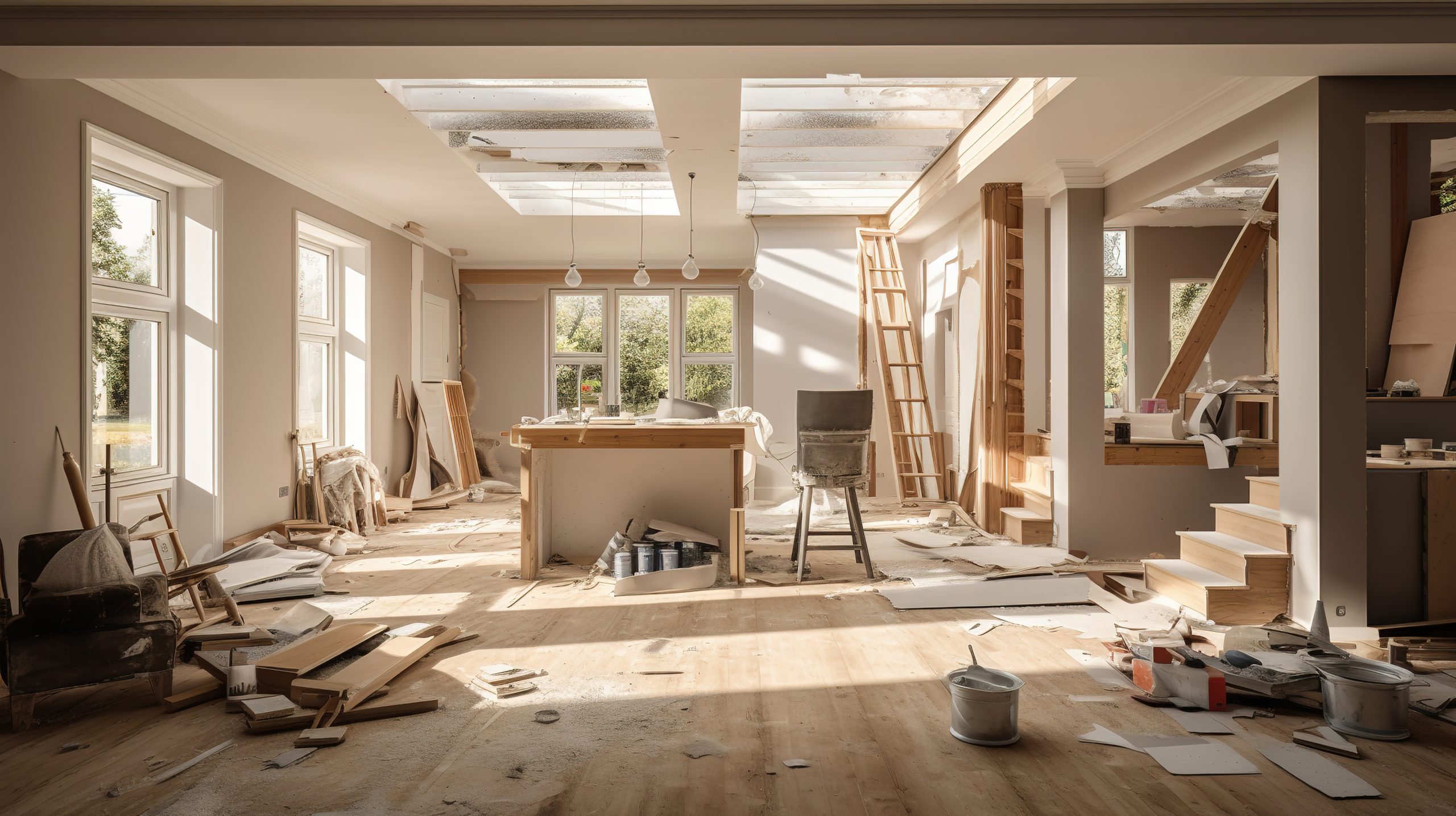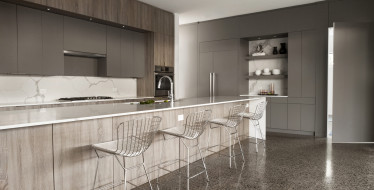Home renovations can be both exciting and overwhelming. Whether you’re upgrading your kitchen, adding an extension, or completely overhauling your living space, the process can disrupt your daily life. However, with careful planning, a clear vision, and the right professional support, you can not only survive but thrive during your home renovation. Let us explore how to live through a home renovation and why hiring an interior designer can be a game-changer in making the experience smoother, more efficient, and ultimately more rewarding.

The Challenges of Living Through a Home Renovation
Living through a home renovation is like embarking on a journey—you know the destination, but the path and how long the journey could take can be unpredictable. Here are some of the common challenges:
- Disruption of Daily Routine: Construction noise, dust, and the presence of workers can make it difficult to maintain your usual routines.
- Decision Overload: From selecting tiles to choosing paint colors, the sheer volume of decisions can be overwhelming.
- Budget Management: Staying within budget is often one of the biggest stressors, especially when unexpected costs arise.
- Timeline Uncertainty: Delays are common in renovations, whether due to material shortages, unexpected structural issues, or changes in design.
- Emotional Strain: The stress of living in a construction zone, coupled with the pressure of making numerous decisions, can take an emotional toll on homeowners.
Despite these challenges, there are strategies you can employ to make the renovation process more manageable.
- Plan Ahead: A detailed plan is your best defense against chaos. Work with your contractor and interior designer to create a timeline that accounts for each phase of the renovation. Make decisions on key elements, such as materials and finishes, as early as possible to avoid last-minute changes.
- Set Up a Temporary Living Space: Depending on the scope of the renovation, you may need to create a temporary kitchen or living area in another part of your home. This space should be functional and comfortable, allowing you to maintain a semblance of normalcy.
- Communicate Regularly: Maintain open lines of communication with your contractor and interior designer. Regular updates and check-ins can help ensure that the project stays on track and that any issues are addressed promptly.
- Prepare for the Unexpected: No matter how thorough your plan, unexpected issues may arise. Build a contingency into your budget and be flexible with your timeline to accommodate unforeseen challenges.
- Focus on the End Result: Keep the bigger picture in mind. The renovation process might be challenging, but the end result—an upgraded, beautiful home—is worth the temporary inconvenience.
The Role of An Interior Designer During a Renovation
While some homeowners might be tempted to manage their renovation project on their own, an interior designer can bring invaluable expertise and perspective to the process. Here’s how an interior designer can add value:
- Vision and Creativity: Interior designers are trained to see the potential in spaces. They can help you refine your vision, suggesting layouts, materials, and design elements that you might not have considered. Their creativity can turn an ordinary space into something extraordinary.
- Expert Project Management: Interior designers often take on the role of project manager, coordinating with contractors, suppliers, and other professionals involved in the renovation. They can help keep the project on schedule and within budget, freeing you from the day-to-day oversight.
- Access to Resources: Designers have access to a wide range of resources, including materials, furnishings, and fixtures that may not be readily available to the public. They also have established relationships with suppliers, which can lead to discounts or priority service.
- Attention to Detail: The devil is in the details, and interior designers excel at ensuring that every aspect of the design is executed to perfection. From selecting the right paint finish to choosing complementary hardware, they make sure that every detail aligns with the overall design vision.
- Stress Reduction: Perhaps one of the most significant benefits of hiring an interior designer is the reduction in stress. With a professional handling the details, you can focus on enjoying the transformation of your home, rather than getting bogged down in the complexities of the renovation process.
- Long-Term Value: A well-executed renovation not only enhances your living experience but also adds value to your home. An interior designer ensures that the design choices made during the renovation are timeless, functional, and appealing to future buyers, maximizing your investment.
Living through a home renovation is no small feat, but with the right approach and professional team in place, it can be a rewarding experience. An interior designer brings expertise, creativity, and project management skills that can transform the renovation process, making it less stressful and more successful. By planning ahead, staying flexible, and leveraging the talents of an interior design team, you can navigate the challenges of a renovation with confidence and look forward to enjoying your beautifully updated home. If you aren’t fully convinced just yet, read about some helpful tips for living through your home renovation from our friends at Southern Living.








